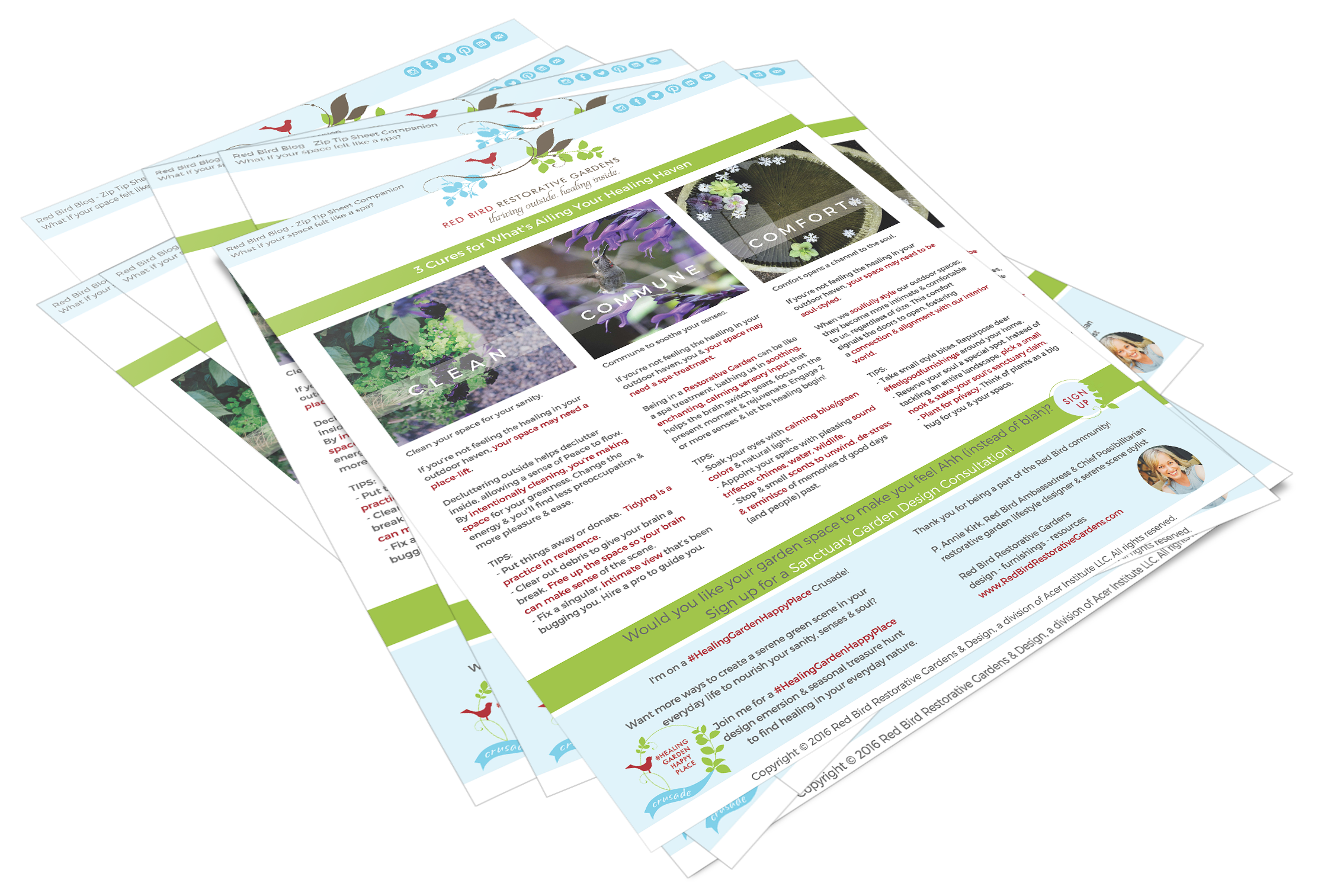I have a dear friend, colleague, and Red Bird co-conspirator, Cairene MacDonald of Third Hand Works. She regularly employs metaphors to help people (and she’s a Canna, according to This Garden is Illegal‘s quiz). I take inspiration from her.
I was out in the garden immediately following this week’s Master Gardener certification class. It was a “big” weekend. I pruned trees and shrubs with a heart filled with zest (new knowledge), compassion (for my plants and my previous mistakes) and motherly concern (did I prune correctly this time?). I looked over each plant, (yes, talking out loud because it helps) channelling the voice, silly jokes, and crazy hand motions of this week’s MG instructor, horticulture teacher, pruner extradionaire, Bob Nelson. I felt part artist and part surgeon pouring care over these pups of mine. The wonders of nature’s effects set in along with the application of the “pruning metaphor” in life.
It has been confirmed, after this week’s teachings, that the various owners of this property, including my Beloved and me, have screwed up the pruning of the flowering cherry out front. (For the purposes of this post, pruning is defined as selective removal of plant parts; maintenance and appropriate care for the life and health of the plant.) The tree stays because Beloved’s mom planted it 30+ years ago, so no “one cut prune” here for sentimental reasons. It looks like heck; it has since I met my Beloved 7 years ago.

hope for her yet
I have rallied – I have info (and hope) as to what’s going on with the tree and why/how we need to “work with” her. Happy with the education I received: teachings of the what and then the why/how = big picture appreciation and then the motivation (and empowerment) to act responsibly – sustainably.
For the record, we (the collective) have made the rookie pruning mistakes:
whoops 1: habitually pruned hard in the dormant period which got us (and the tree) a heck of a lot of vigorous upright growth with little spring bloom (picture your hair on end with static electricity),
whoops 2: we cut the “water sprouts” rather than waiting to “pop” them out once they reached for 2 – 4″ growth (so we now have double the emergence of water sprouts x 7 years because we stimulated the buds with our cuts each year, each cut),
whoops 3: left nubs where we (and others) didn’t cut to the collar nor follow the mirror image of the bark protection ridge,

nubs, stubs, shoots
whoops 4: topping (my stomach turns as I type this word) done by previous owners,
and, drum roll please,
whoops 5: wound treatment to “make the tree feel better and heal”. Those before us didn’t know that more and more research shows that wound treatment actually traps moisture in which leads to disease problems and stymies the tree’s natural branch protection boundary (chemicals to deal with a cut). A Bob Nelson-ism for you:
Plants are generating systems – they don’t heal. Animals are re-generating systems, so when we have a wound and treat it, we heal. Plants don’t heal, they respond.
—–
And now for the metaphor:
This activity & education has me thinking about how pruning parallels life – if we understood what was going on with our bodies, then we would know why/how to take care of (prune out) that which we needed to in order to sustain ourselves, our growth – so that we might act responsibly for and about our lives and our health.
—–
I love gardening in the parallels – between plant health and my health and lessons contained therein: I left a couple of trees and shrubs because after the class I was reassured to wait for the right season. I trained some plants instead of pruning them – for life and strength. I cut to the collar on a few so that the right growth might happen. I dealt with codominant stems – competing vertical upright growth – and determined which was most appropriate for life and cut the other away. Train, care, maintain — good rules to prune (live) by.
As a “healing garden” advocate I’m down with the research that informs landscape design. Yet as a fellow gardener, your neighbor, a person, a spirit, I really “know” what gardening does for me — how it helps me, how it supports me, how I “heal” and grow from mistakes, how I restore.
Sometimes we make mistakes – in life & in the garden – I don’t let this “possibility” stop me or keep me from trying new things in either realm. My garden is the best place to practice life, care, maintenance. Spring and summer plant responses will provide me “feedback” of my pruning treatment and I patiently wait to learn more.
Wanna learn more about pruning too? Find Bob and other great garden allies at Clackamas Community College (the only PLANET accredited program in Oregon)- they have a great spring line up of short courses.
 Mrs. Natter insects: What’s buzzin’ in your garden?
Mrs. Natter insects: What’s buzzin’ in your garden?
 Sustainable Gardening: Oregon-Washington Master Gardener Handbook
Sustainable Gardening: Oregon-Washington Master Gardener Handbook





